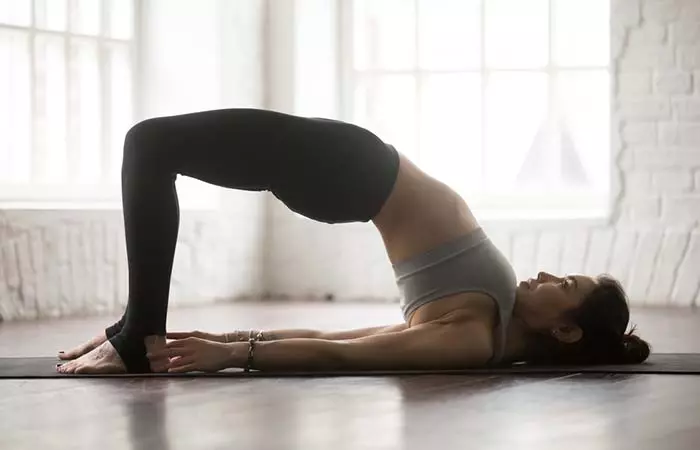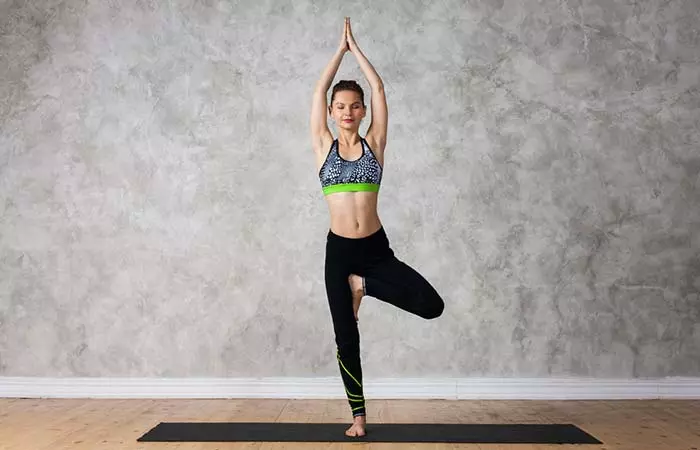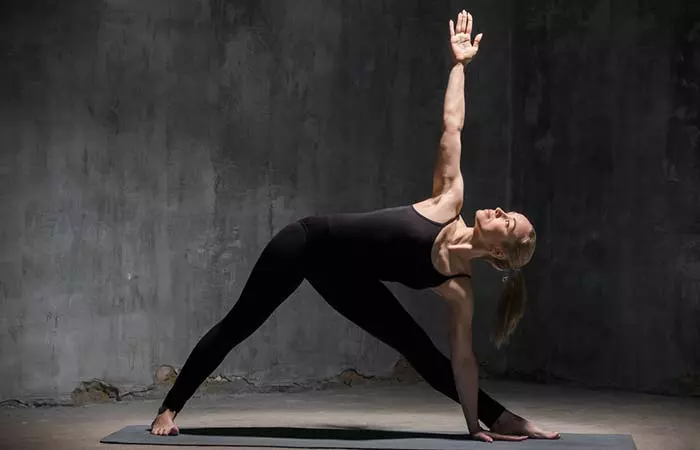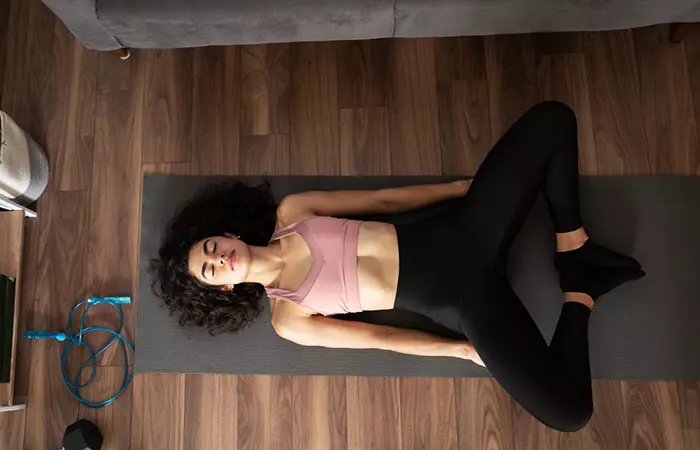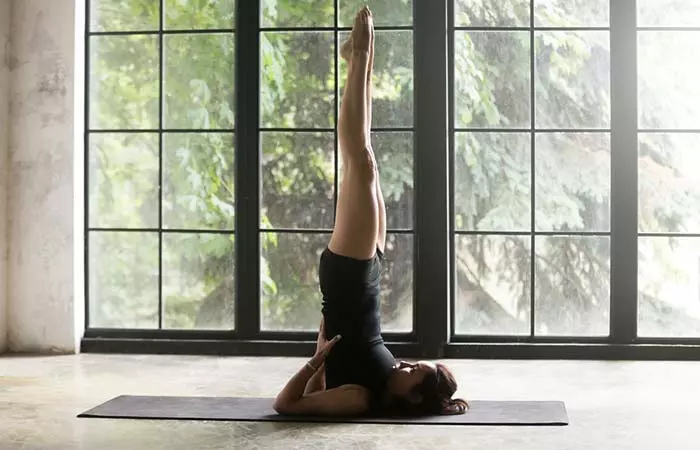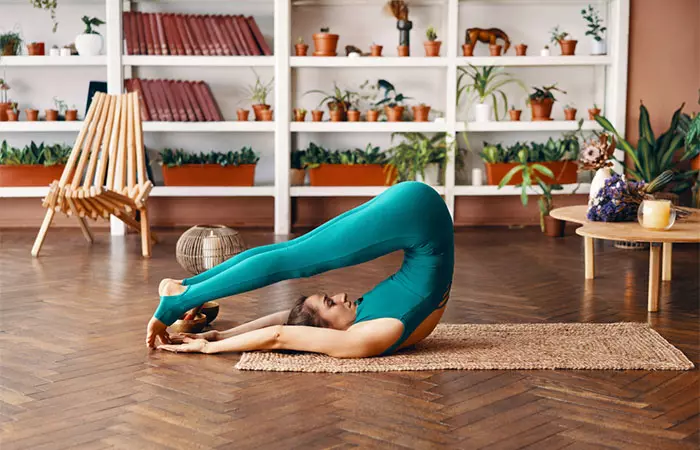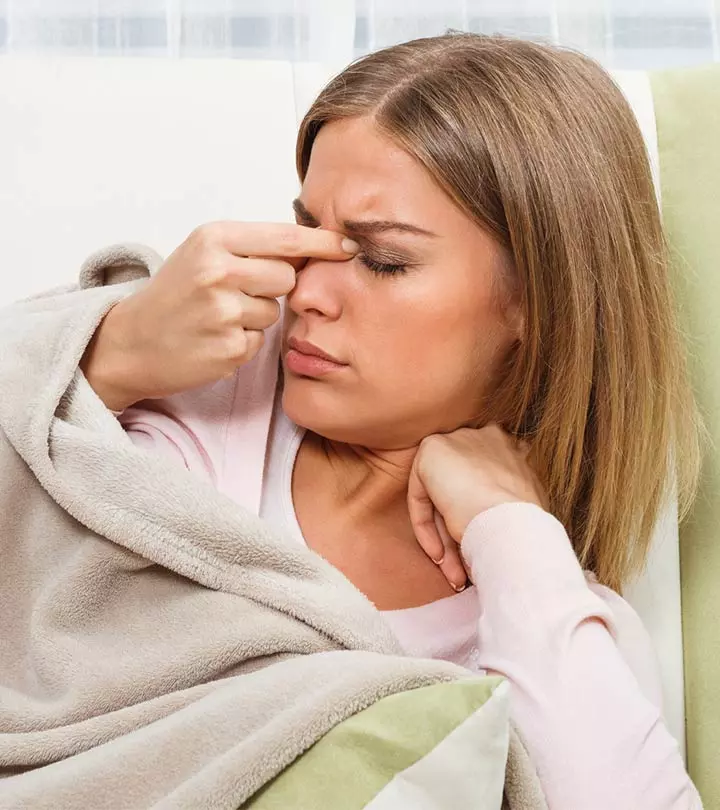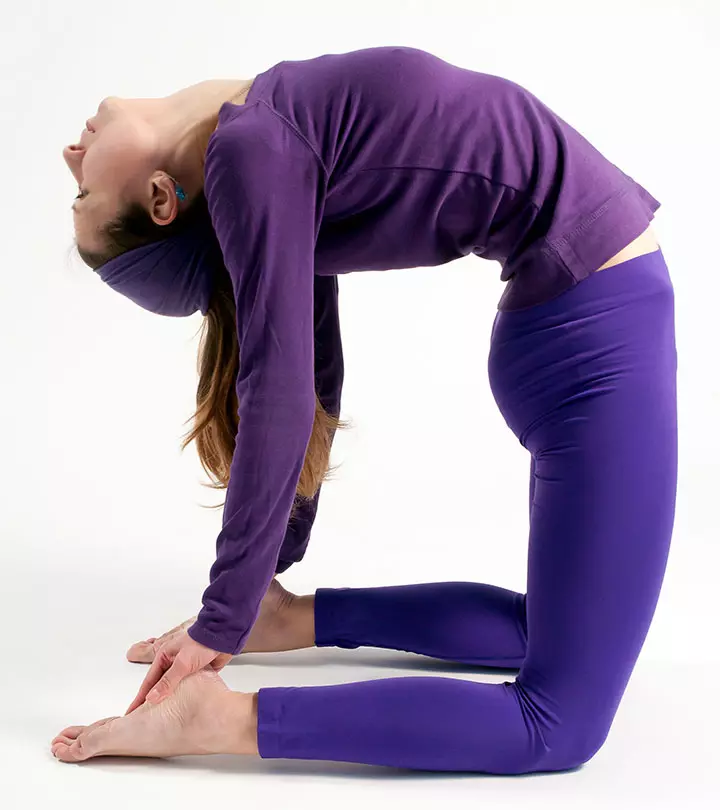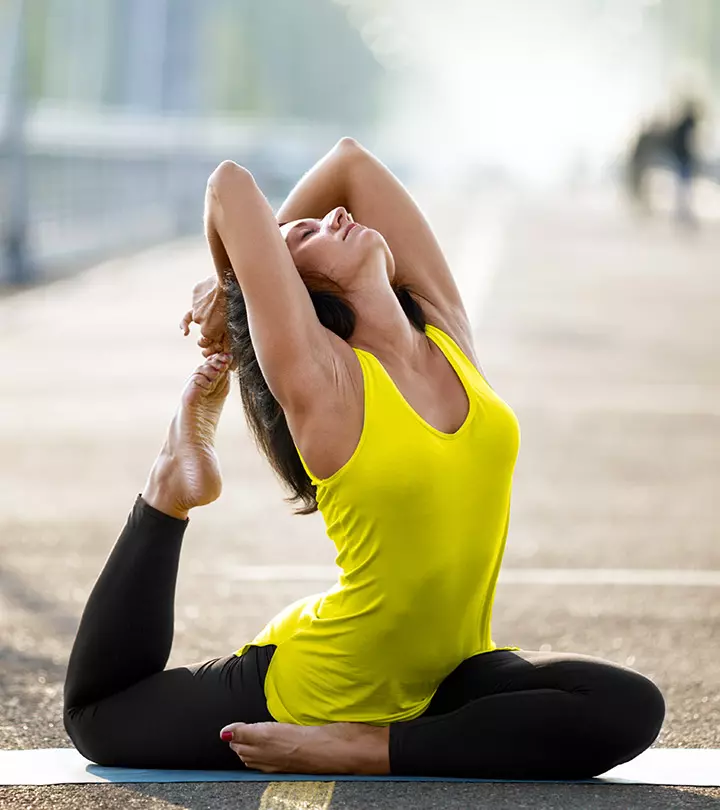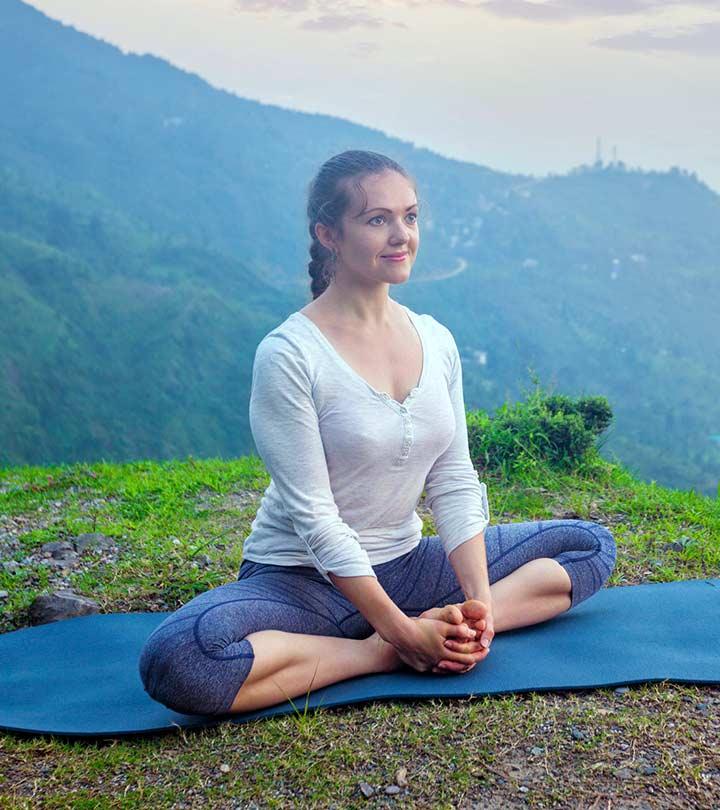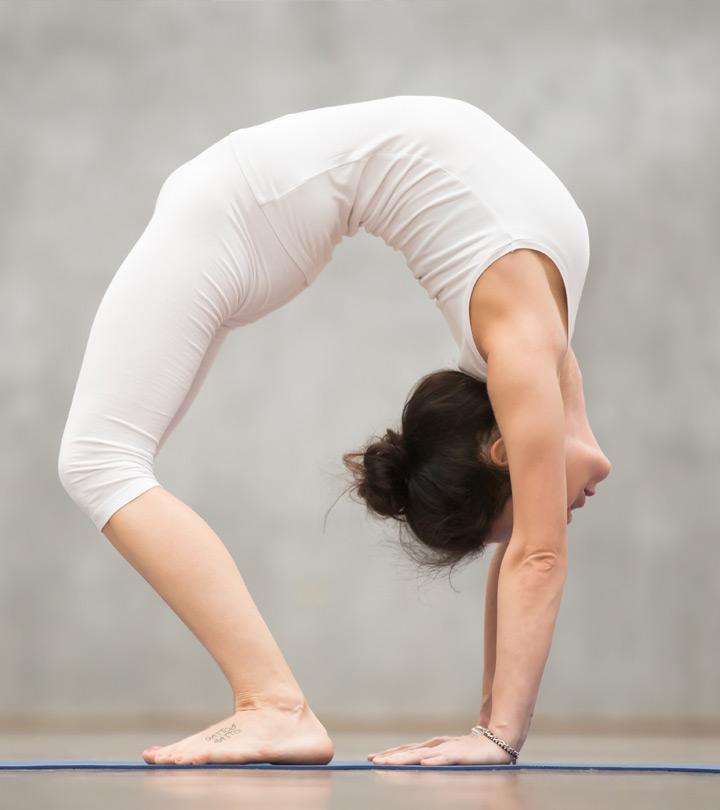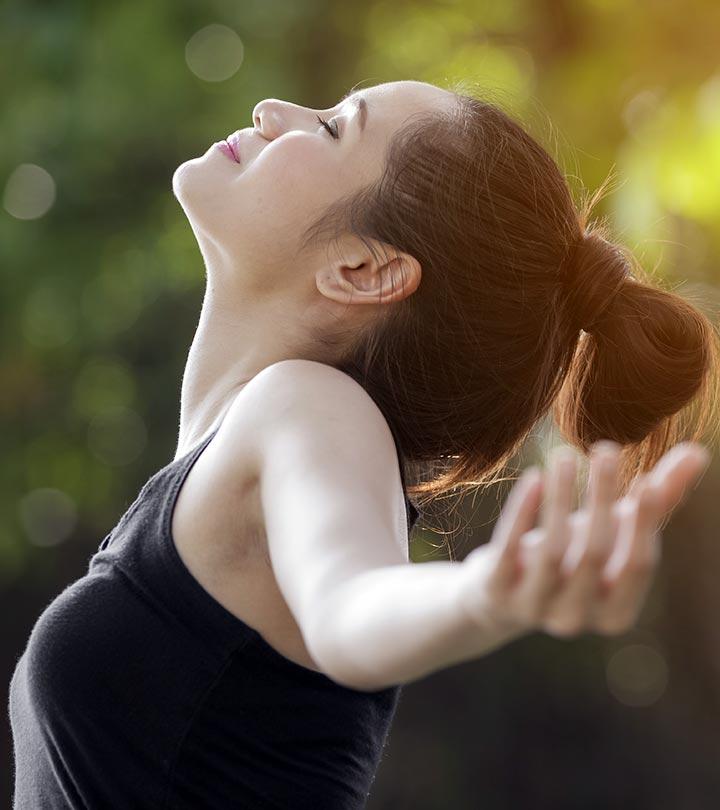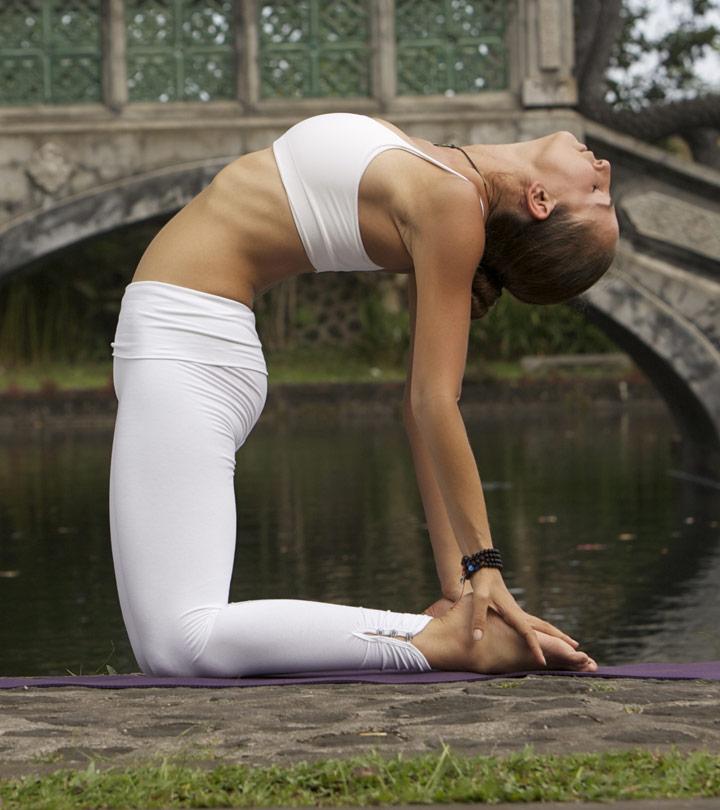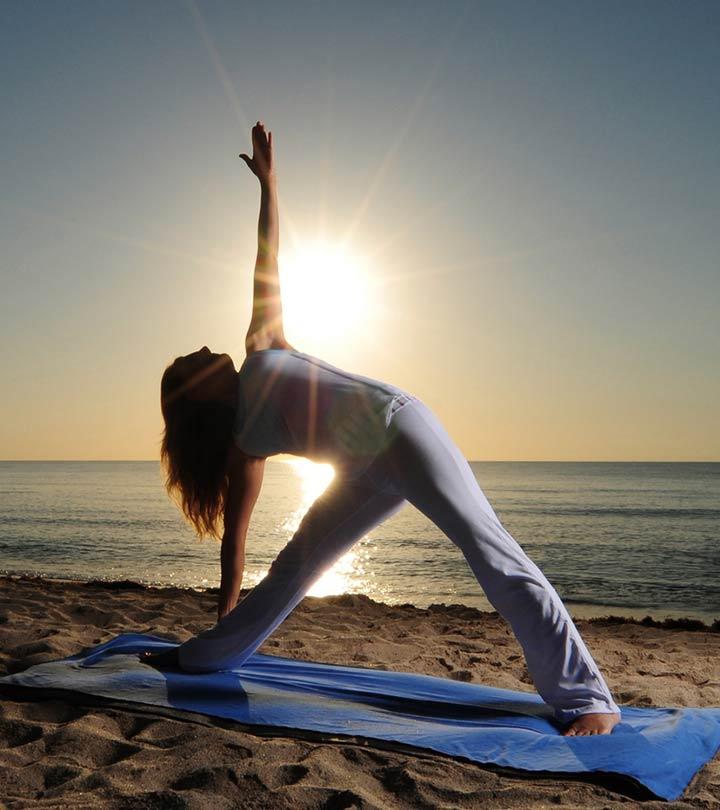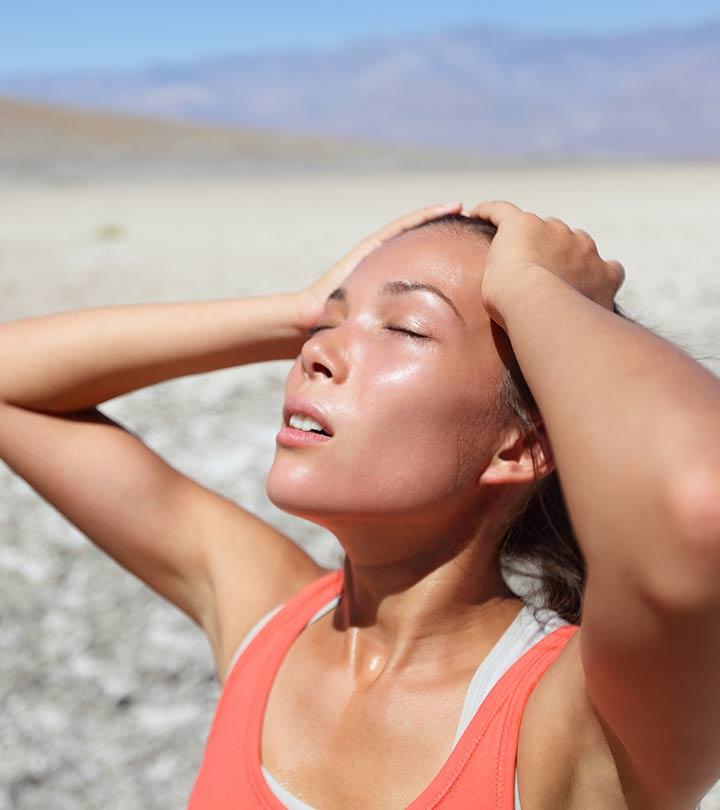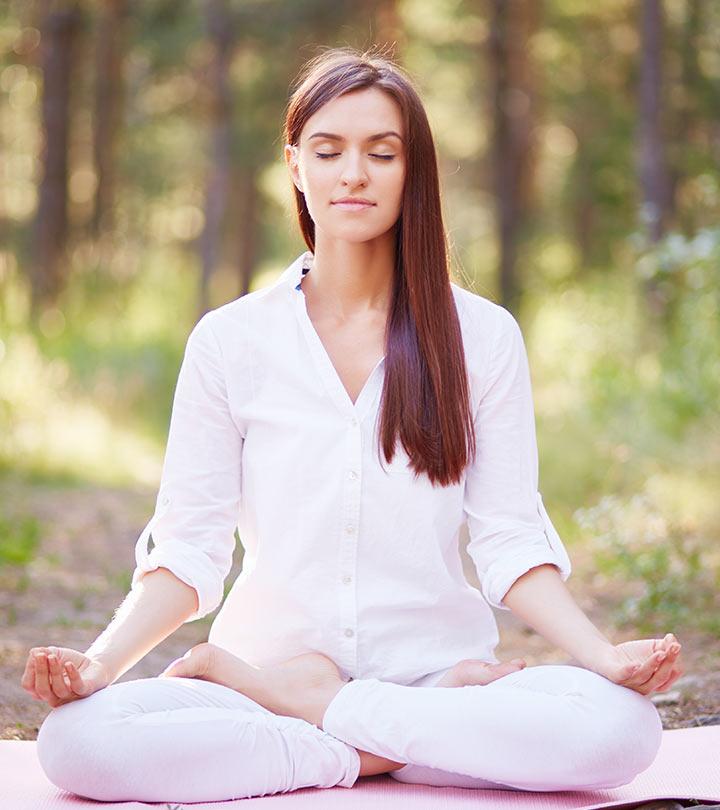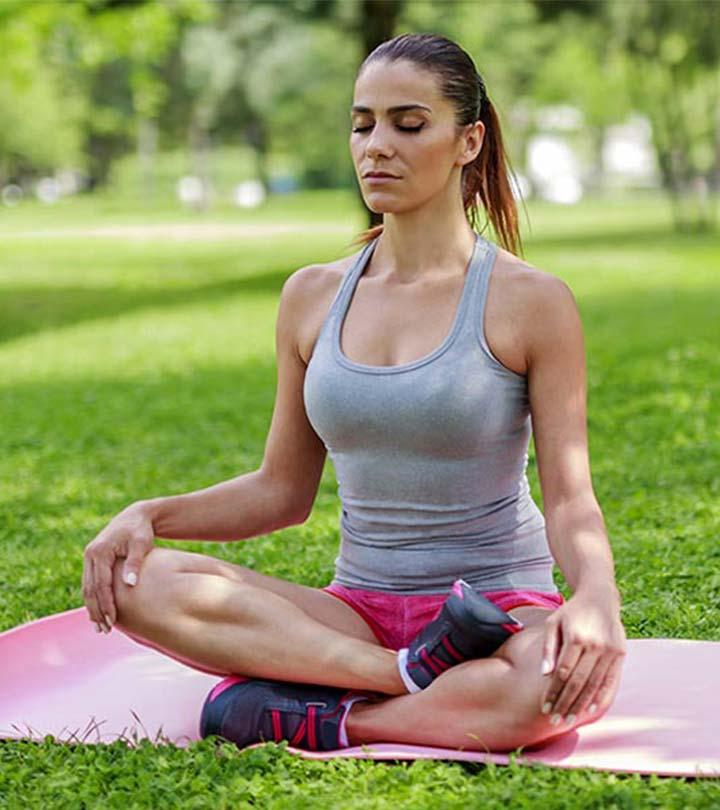8 Best Yoga Poses To Relieve Allergic Rhinitis
Easy-to-do and effective asanas to help relieve nose irritation from allergens.
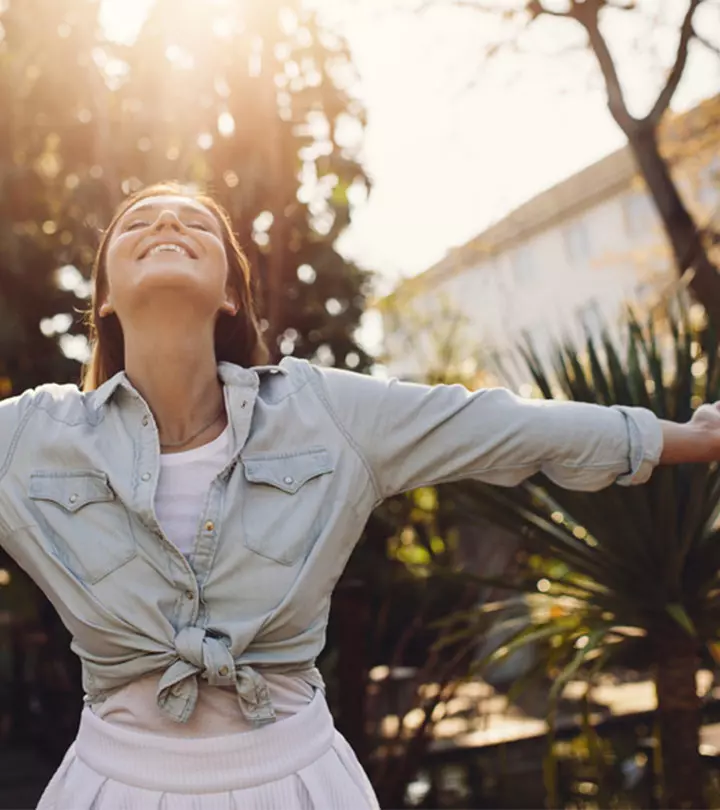
Image: shutterstock
If you are uncertain whether yoga for allergic rhinitis is effective, you don’t need to be. Performing certain yoga poses can effectively treat nasal congestion and inflammation and offer you immense relief.
Allergic rhinitis is caused when you come in contact with certain allergens in the air. It can cause allergies like a scratchy throat and persistent sneezing that can be very worrying.
In this article, we have brought to you the seven most effective yoga poses that help you keep this inflammatory condition at bay. Let us get started!
Let us begin the learning by understanding what allergic rhinitis is, shall we?
In This Article
What Is Allergic Rhinitis?
Allergic rhinitis is a common problem in urban spaces causing inflammation and sensitivity in your nasal airways. The problem arises due to contact with allergens such as dust or pollen.
Your body’s immune system produces histaminei A chemical compound produced by the immune system to combat foreign substances or infections, which cause inflammation or a runny nose. to combat the allergen causing itchy eyes and a runny nose as side effects.
Allergic Rhinitis also occurs as a result of environmental pollutants, stress, a bad diet which make your respiratory and nervous systems sensitive leading to allergic rhinitis.
Allergic rhinitis affects children and adults alike. Around 10%-30% adults suffer from it worldwide whereas it affects 40% children.
In 2019, a cross-sectional study was carried out in 21 primary schools to investigate the prevalence and associated risk factors of allergic rhinitis. The study utilized the International Study of Asthma and Allergies in Childhood-based questionnaires and the findings revealed that the prevalence of cumulative allergic rhinitis among the 3,836 children aged 6 to 12 years in Budapest was 36.2%.
The allergen is a foreign substance which is pollen in the case of allergic rhinitis. Your body’s way of responding to the allergen is called allergy or allergic rhinitis.
Allergic rhinitis is also known as hay fever, and its signs include a runny nose, watery eyes, swelling, sneezing, coughing, sore throat, dark circles, headache, skin blisters, and fatigue.
Within a few minutes of allergen exposure, your body reacts to it affecting your sleep patterns, working ability, and concentration.
There is a seasonal and perennial type of allergic rhinitis. Seasonal allergic rhinitis occurs during spring and fall season mainly due to outdoor allergens such as pollen whereas perennial allergic rhinitis occurs anytime of the year as a result of indoor allergens such as dust and pet hair.
You are more likely to suffer from allergic rhinitis if your family has a history of suffering from the same. Asthmai A condition in the airways swells and narrows and produces extra mucus, which causes shortness of breath, coughing, and wheezing. also increases the risk of allergic rhinitis.
 Quick Tip
Quick TipSo, it’s best to combat it or at least soothe the effects of the symptoms on your body. Let’s check how yoga helps do so, shall we?
Yoga For Allergic Rhinitis – How Does It Help ?
Yoga is a natural remedy for allergic rhinitis. Yoga poses can decrease the intensity of the allergic symptoms.
It is a timeless cure that improves your breathing, improves the functionality of bodily systems, improves your mental state, and keeps you fit and active.
However, it may not work for everyone. Eshwar Nilakantan, a blogger who dealt with allergic rhinitis for several years, explored numerous treatments, including yoga, in his quest for relief. Describing his experience, he writes, “I’ve tried almost every possible treatment (allopathy, homeopathy, yoga, meditation, jal neti, etc.) in the last 18+ years (i).” However, he found that most methods offered only short-term relief without a lasting solution for his allergic rhinitis.
Some yoga poses in specific, help you control and find relief from allergic rhinitis. Have a look at them below.
Yoga Exercises For Allergic Rhinitis
- Pavanamuktasana
- Trikonasana
- Vrikshasana
- Virabhadrasana I
- Sethu Bandhasana
- Salamba Sarvangasana
- Supta Baddha Konasana
- Halasana
1. Pavanamuktasana (Wind- Relieving Pose)
About The Pose- Pavanamuktasana or the Wind-Relieving Pose is an asana that works well to relieve your digestive gases. It is a beginner level Vinyasa yoga asana. Make sure you practice it in the morning on an empty stomach and hold the pose for 10 to 60 seconds.
Benefits For Allergic Rhinitis- Pavanamuktasana massages and stimulates your abdominal organs, which helps improve blood circulation in your body. Increased blood circulation to the abdominal organs improves immune function.
To know more about the pose and its procedure, click here- Pavanamuktasana.
2. Sethu Bandhasana (Bridge Pose)
About The Pose- Sethu Bandhasana or the Bridge Pose is an asana that is similar to the structure of a bridge. It is a Vinyasa yoga asana that is great for all levels. This pose can be done actively or passively, depending on your energy levels. Practice it in the morning on an empty stomach and hold the pose for 30 to 60 seconds.
Benefits For Allergic Rhinitis- Sethu Bandhasana stretches your neck and chest. It reduces stress and mild depression. The pose stimulates your lungs and reduces fatigue and headache.
3. Vrikshasana (Tree Pose)
About The Pose-Vrikshasana or the Tree Pose resembles the stance of a tree. It is a simple standing pose. The pose is a Hatha yoga asana and is great for all levels, but those with balance issues should practice near a wall. Practice it on an empty stomach with eyes open. Hold it for 30 seconds on each leg.
Benefits For Allergic Rhinitis- Vrikshasana helps you find balance in life. It builds confidence and self-esteem. Vrikshasana gives a good stretch to your body from head to toe. It calms your nervous system and keeps you focused.
To know more about the pose and its procedure, click here- Vrikshasana.
4. Virabhadrasana I (Warrior I Pose)
About The Pose- Virabhadrasana I or the Warrior Pose I is an asana named after a legendary hero called Virabhadra. It is a beginner level Vinyasa yoga asana. Practice it in the morning on an empty stomach and hold the pose for 20 seconds on each leg.
Benefits For Allergic Rhinitis- Virabhadrasana stretches your neck, shoulders, chest, and lungs. It strengthens your back muscles. The pose energizes your entire body and improves respiration.
5. Trikonasana (Triangle Pose)
About The Pose- Trikonasana or the Triangle Pose is an asana which looks like a triangle when you assume the pose. t opens up the entire body in all directions. It is a pose that can be practiced by all levels of students but if you are a beginner, it could be practiced with your back to the wall and with blocks under your hands. Practice the pose for 30 seconds on each leg.
Benefits For Allergic Rhinitis-Trikonasana strengthens and opens up your chest and back. It betters your mental and physical state. It tones and lengthens the muscles of the legs. Also, the pose makes for a great tool for managing stress and improving holistic health.
 Did You Know?
Did You Know?6. Supta Badha Konasana (Reclined Bound Angle Pose)
About The Pose- Supta Badha Konasana or Reclined Bound Angle Pose is a restorative yoga pose. Restorative yoga relaxes your body and mind, soothes your nervous system, and improves your overall well being. It is recommended to practice this pose with a bolster and blankets to maximize the therapeutic effects. Stay in this pose for 5-7 minutes.
Benefits For Allergic Rhinitis-Supta Badha Konasana opens up the chest and inner thighs. The pose also reduces stress improves overall wellness, and soothes your nervous system.
7. Salamba Sarvangasana (Shoulder Stand)
About The Pose- Salamba Sarvangasana or the Shoulder Stand is an inverted posture and is considered the queen of all asanas. It is an advanced-level shoulder stand. Practice the pose in the morning on an empty stomach and clean bowels, and hold it for 30 to 60 seconds. It can be increased up to 7 minutes if there is no pain or pressure in the head or neck.
Benefits For Allergic Rhinitis- Salamba Sarvangasana calms your nerves. It reduces your insomniai A sleeping condition where a person finds it difficult to fall and stay asleep due to unhealthy sleeping habits or certain medications. and irritability. The pose improves blood flow into your lung area. It’s a physically challenging pose initially, but, over time, and with consistent practice, one can experience the therapeutic effects.
To know more about the pose and its procedure, click here- Salamba Sarvangasana.
8. Halasana (Plow Pose)
About The Pose – Halasana involves lying on your back and lifting your legs over your head, resembling a plow shape. It should be performed on an empty stomach in the morning. Hold the pose for 10 to 60 seconds and gradually increase the duration as your flexibility and comfort level improves.
Benefits For Allergic Rhinitis – It aids in relieving the pressure built up in the body and improving blood circulation, including the abdominal organs. Enhanced blood flow to these organs can positively impact immune function, which may help in managing allergic reactions. It is advisable to practice Halasana under the guidance of a trained yoga instructor to ensure proper alignment and safety.
Now, let’s answer some common queries on yoga and allergic rhinitis.
Infographic: Top 5 Yoga Poses For Relief From Allergic Rhinitis
With the change of seasons, many people fall prey to different types of allergic conditions, and allergic rhinitis is one of them. Though the best way to prevent it is to avoid allergens that trigger it, yoga can also help. Check out the infographic below for the best yoga poses that can help you find relief from it. Illustration: StyleCraze Design Team
Embracing yoga for allergic rhinitis goes a long way in reducing nasal inflammation triggered due to allergens like dust and pollen. The symptoms of allergic rhinitis include runny nose, sneezing, coughing, watery eyes, sore throat, and fatigue. It is more common in urban areas, courtesy of rising pollution levels. Yoga asanas listed above work wonders to relieve these symptoms of allergic rhinitis besides helping improve breathing, stimulating nerves, improving blood circulation, flushing out toxins from the body, reducing stress, stimulating the lungs, opening up the chest, and shoulders, strengthening the spine. So, bank on these asanas the next time you feel like allergic rhinitis is setting in. You can also practice breathing exercises, pranayam, or meditation to improve your breathing.
Frequently Asked Questions
Is allergic rhinitis life-threatening?
No, allergic rhinitis is not life-threatening as long as you take proper care.
Do I practice yoga only when I get attacked by allergic rhinitis?
No, practice the yoga poses for allergic rhinitis every day, so your body is prepared when there is an attack. Also, practice even after the attack to soothe the symptoms.
What foods cause allergic rhinitis?
Foods like eggs, cow’s milk, peanuts, nuts, soy, wheat, fish, and shellfish commonly cause allergic reactions and rhinitis (1).
How do you get instant relief from allergic rhinitis?
Use antihistamines or decongestant nasal sprays to relieve allergic rhinitis.
How long does allergic rhinitis last?
It depends on the extent of exposure to the allergen and the treatment undertaken to soothe it. Symptoms of allergic rhinitis may last a couple of weeks.
Key Takeaways
- Yoga may help the respiratory system as a whole work better, which may help control allergic rhinitis symptoms.
- Salamba Sarvangasana may help you relax, sleep better, and be less agitated.
- Pavanamuktasana is an effective asana for releasing intestinal gases.
- Trikonasana opens up and strengthens your chest and back.
- Vrikshasana may give a good stretch from head to toe.
Yoga is an amazing tool that can help treat most ailments and keep you healthy and fit. Check out the video below to learn effective poses that can improve your respiratory functions.
Personal Experience: Source
StyleCraze's articles are interwoven with authentic personal narratives that provide depth and resonance to our content. Below are the sources of the personal accounts referenced in this article.
i. I stopped treating my symptoms to cure my allergies!https://medium.com/@eshwar13/i-stopped-treating-my-symptoms-to-cure-my-disease-2d4de53f40ab
References
Articles on StyleCraze are backed by verified information from peer-reviewed and academic research papers, reputed organizations, research institutions, and medical associations to ensure accuracy and relevance. Read our editorial policy to learn more.
- Food-induced immunoglobulin E-mediated allergic rhinitis
https://www.ncbi.nlm.nih.gov/pmc/articles/PMC6014210/
Read full bio of Patrick Franco
Read full bio of Ravi Teja Tadimalla
Read full bio of Himanshi Mahajan






